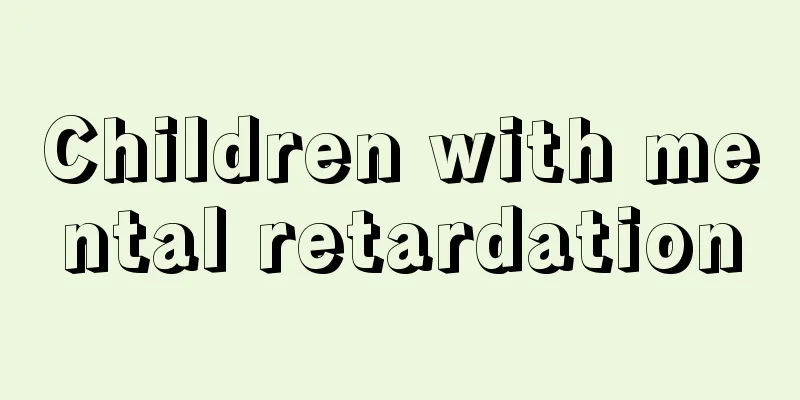Children with mental retardation

|
Some parents find that their children develop later than other children, and that their children find it difficult to acquire skills that other children of the same age acquire naturally. Or maybe your children don’t give corresponding feedback when there should be a reaction. At this time, it is necessary for you to take your child to the hospital to check whether your child has mental retardation. Below I will introduce to parents five aspects of the manifestations of mental retardation in children. 1. Language delay: Normal babies will imitate sounds at 7-8 months old, call mom and dad at around one year old, can say a dozen words at one and a half years old and understand simple instructions, can ask simple questions at around 2 years old, and can basically express their thoughts at around 3 years old. Any symptoms that occur four to five months or even one to two years behind should be considered a sign of developmental delay. 2. Mental retardation: As an infant, the child is abnormally quiet or hyperactive, cries less or more, has difficulty feeding, has dull eyes, does not respond to teasing, and reacts poorly to things around him or her; as a toddler, the child cannot speak or speaks words that adults cannot understand, has slow reactions, and cannot understand simple instructions; during school age, the child exhibits learning difficulties, poor comprehension, poor memory, and does things without purpose. 3. Brain development retardation Intellectual developmental disorder. In mild cases, the intelligence is close to normal or low, the patient is talkative or taciturn, hyperactive or dull, moves without regard for close friends or strangers, has unstable emotions, is easily impulsive, has frequent dreams and enuresis, etc. In severe cases, the patient has dementia, drooling, aphasia, hemiplegia, paraplegia, forced crying, forced laughing, incontinence, etc. 4. Growth retardation It means that the child's height, weight, head circumference, chest circumference, and dental development are significantly lower than the normal standards. If a child is 5-6 months behind other children of the same age in a normal environment, it may indicate developmental delay. 5. Motor development retardation Includes gross motor skills and fine motor skills. Gross motor skills such as head control, sitting, crawling, standing, walking, jumping, running, etc.; fine motor skills such as grasping and releasing, pinching fingers, imitating drawing, folding, etc. If a child's motor development is 4-5 months behind normal children of the same age, he or she may have motor delay. |
<<: What to do if your child has a flat nose
>>: What to do if your child has inverted nipples
Recommend
Why does my baby suddenly lose his appetite?
Many babies often have poor appetite, and most pa...
Steps to make mashed potatoes for kids
As parents, we must pay attention to the nutritio...
Heel blood screening method
Many people feel unfamiliar when they see heel bl...
What is the problem with a two-year-old baby grinding his teeth?
Taking care of children is a very annoying but ha...
What is the reason for the child's fever not going away?
In our daily life, we will find that some babies ...
10 month old baby has trouble sleeping
Sleep is very important for babies. All the energ...
Prepare seven-day nutritious meals to make your child healthier
Middle school students are in a period of growth,...
What kind of yogurt is better for a 1-year-old?
Can a one-year-old baby drink yogurt? What kind o...
Is it normal for a four year old to lose teeth?
Tooth loss is a process that every child must go ...
What causes hunchback in children?
The problem of hunchback in children is a concern...
7-year-old weight loss diet three meals a day
Losing weight has become a major goal that many p...
What are the symptoms of UV allergy in babies?
Children's skin is relatively delicate, so th...
What should children eat if they are zinc or calcium deficient?
Dietary therapy is a very good method for childre...
What to do if a child has a fever
Generally speaking, our normal body temperature i...
8-month-old baby development standard
New mothers are still relatively unskilled in tak...









